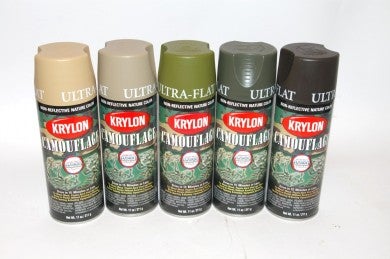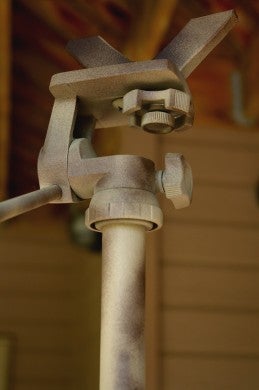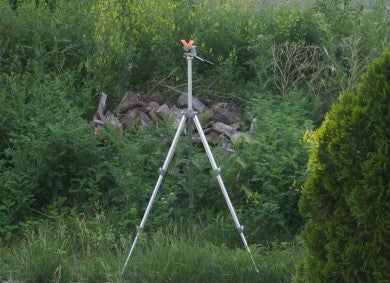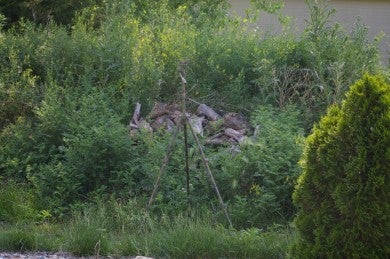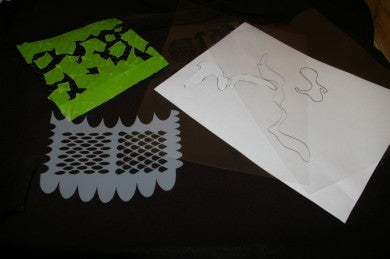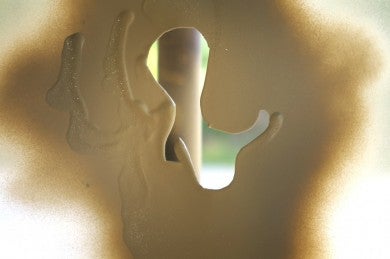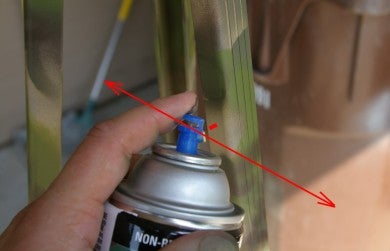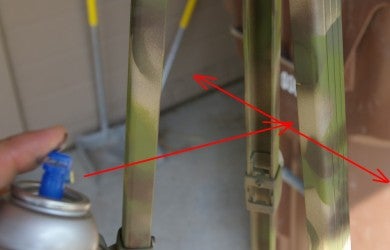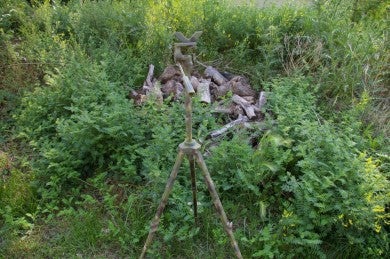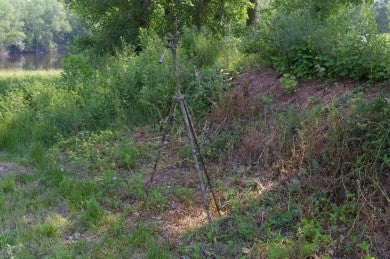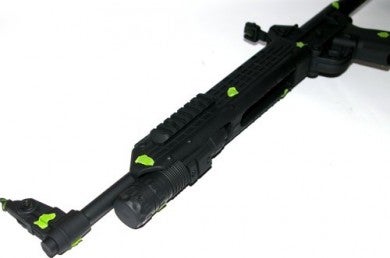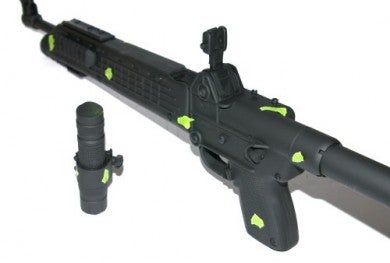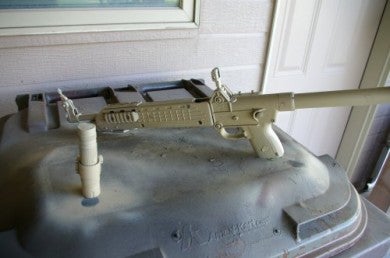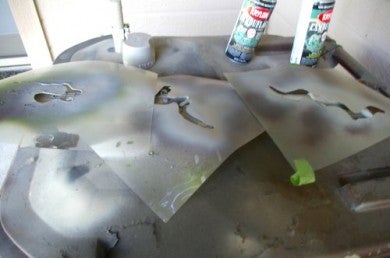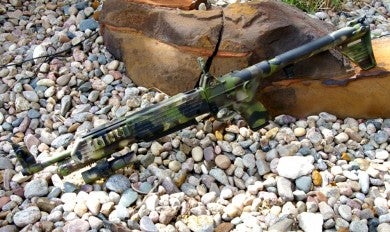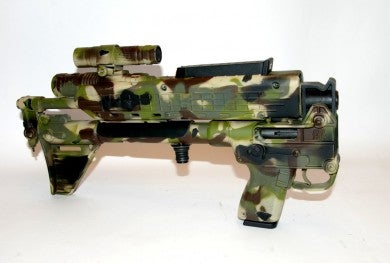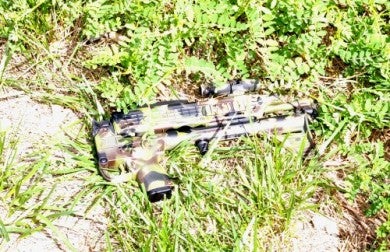DIY: How to do Krylon Multi-Cam Type Camouflage Paint Job
Major Pandemic 09.13.16

All too often we wish something we own would be a little less obvious out in the field. Paint is often the simplest, most obvious solution. The typical selection of flat paint is limited to generally the black and white color schemes, but a few years back Krylon introduced a specific set of ultra-flat, non-reflective, natural color spray paints just for camouflage.
These paints use Krylon’s proprietary “Fusion” paint technology for improved bonding with plastics and other materials, primerless application, improved chip resistance, and a new style of no-clog tips. It is as easy to use as any spray paint, so no special skills are required for application. Better yet, for about $20 you can own the full set of six colors, which will provide coverage for numerous small projects.
Surface Prep
Krylon recommends the surfaces be clean and free of rust, and if shiny, lightly sanded to improve bonding. I usually wipe down my metal and plastic parts with rubbing alcohol and allow them to completely dry.
Theory of Modern Camouflage
Much has changed is the ideas of camouflage since Vietnam era patterns. One of the newer ideas in camouflage was originated and developed by Multi-Cam and utilize blurry blended backgrounds combined with sharp abstract shapes. The blurry background bit is simple for the DIY’er, but the sharp abstract shapes can be tough. I think I managed to fairly well, though.
My First Project
I plan on painting a number of things, but I thought it best to start with something inexpensive before I moved on to more expensive things such as shotguns, rifles, etc.
My choice came when shopping for a camouflage shooting tripod and realizing I already owned a tripod in the form of an old circa-1960 camera tripod that was made to handle heavy cameras. By adding a simple “V” fabricated out of an old plastic cutting board, I had a stable standing-height shooting rest. It was pretty obvious standing in the grass.
Tools and Stuff I Used
- Krylon Paints in Sand, Khaki, Woodland Light Green, Olive, Brown
- Disposable rubber gloves
- Camouflage templates downloaded from Krylon’s website
Making Your Own Camouflage Templates/Masks
There is some science to camouflage shapes, but I have created successful and usable camo using pretty much any shape, including skulls, smiley faces, logos, and plastic loops from a six-pack of beer.
You can use a piece of gutter mesh with random tape pieces applied which will give you a snakeskin-like camouflage. Airbrush stencils such as this snake pattern Art-Tool stencil are expensive but work extremely well and hold up for years if cleaned.
You can draw your own random amoeba or leaf shapes on a piece of paper and cut them out, or even use a leafed branch as a spray through template… all of these will work. I have an old box of acetate Power Point projector films (you know the ones we used to print out and put on a projector). These old films work great as printable templates and can be used over and over again and cleaned with most solvents… just cut out the design with an exacto knife and you are ready to go. The one general golden rule is to have at least one long template or shape, one fatter wider one, and one smaller and more random pattern. Camo will work with just one pattern, but it will work better when various patterns are used.
Application
In this case, I wanted to apply the paint colors from lightest to dark. Spraying from a distance of 6 to 12 inches provides various degrees of blending, which allowed for the Khaki base to blend in with the Sand and Brown areas. These blends where done by passing the spray across the tripod at various distances. The longer distances provided shadowing and the shorter ones provided more pronounced color changes.
As it stood at this point, it did a pretty good imitation of a desert camo paint job, but since we have some green here, I continued.
The next step was to add in some foliage-based Olive and Light Green colors using the templates. The goal here is to add crisp shapes rather than blurry backgrounds, so this can take a while. Here is where I would hold a leafed branch over the object and spray though it as a template or use your template shapes.
I recommend you tape on the template rather than holding it up. You will want to spray the olive green and then Brown, and then light green over the template without moving it. As with a leaf they transition from one color to another.
Swap templates and repeat the process. About 30 times, 45 minutes, and several beverages later, I had the tripod complete. This is where you might want to have a variety of templates because the templates start to get soaked with paint and start dripping on things. If a template gets too wet, stop and replace it with another template for the next squirt, or you will start to screw up the paint job.
As you can see from the photos below, I should have kept the inside of the tripod legs lighter. A lighter color in naturally shaded areas will offset the darker color of these areas to provide better blending. This of course is an easy fix, but learn from my mistake.
The nice thing about camouflage paint is that if you live in a greener, browner, or sandier area, you can use more of those colors and omit the ones that do not match the environment.
Cure Time
Krylon camouflage paint dries to the touch in a matter of seconds, but to fully dry for handling takes 24 hours and chip resistance reaches maximum protection in 7 days. The project can be handled after the first 24 hours but I recommend you let it fully cure before subjecting it to harder use.
What I Like
This project was easy and cheap. Krylon has not only provided an easy-to-use product, but also great How-To guides, Free Camo Pattern Templates, and Tips and Tricks to make your project successful. Even if you go all random freehand-painting and omit stencils, you can still create an effective camo job.
The paint is VERY flat and low reflective and does exactly what it claims to do. It provides great, economical coverage of your equipment.
What I Would Change
I wish it did not take 7 days to fully cure, but your patience will be rewarded. After the paint sets for 7 days can it come off? Well, yeah, just like any paint. It will take a fair amount abuse, but is not indestructible.
If you need a solvent-resistant finish such as on firearms, I recommend applying about 4-8 coats of spray flat lacquer over the Krylon paint. In my tests, this adds durability and will allow the paint to resist even the harshest of bore solvents.
Kel-Tec SUB2000 Camouflage Paint Job
For my Kel-Tec Sub2000 carbine, I wanted to make it a bit different by following an old theme camo pattern. After removing the magazine, bolt, and charging handle and masking off the serial number, barrel bore, chamber, sights, and magazine well, I coated the entire rifle in Ultra Flat Camo Black Krylon.
The next step was to place small bits of masking tape, to be peeled off after the paint job.
I applied a complete coat of Khaki. After that dried, I applied darker sand patterns using the Krylon pattern overlays used for the tripod project.
After that, it was as simple as laying on color after color using stencils with Brown, Olive green, and Light Foliage Green, and finally a few spots of the Black again.
All the masking tape masks were removed and after re-assembly, I have to say I am very happy with the results.
Krylon Camouflage Colors Available
- Black
- Khaki
- Brown
- Olive
- Sand
- Woodland Light Green
- Gray
- Orange Camo
- Pink Camo
- Blue Camo
